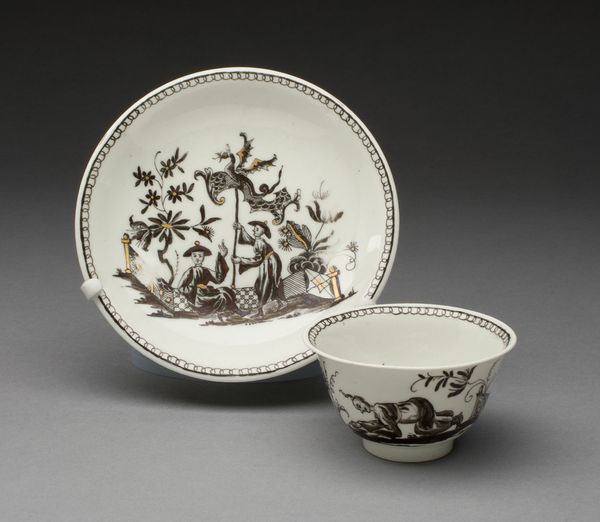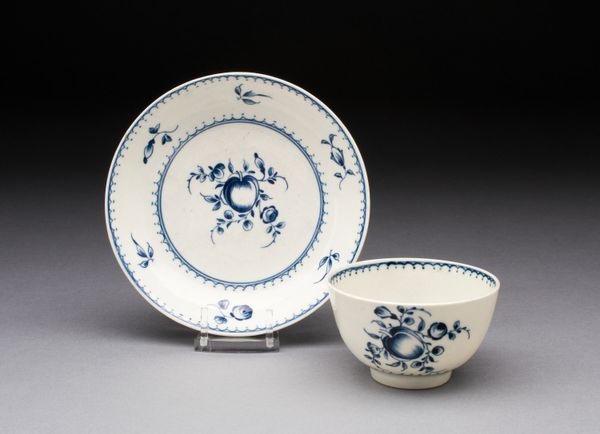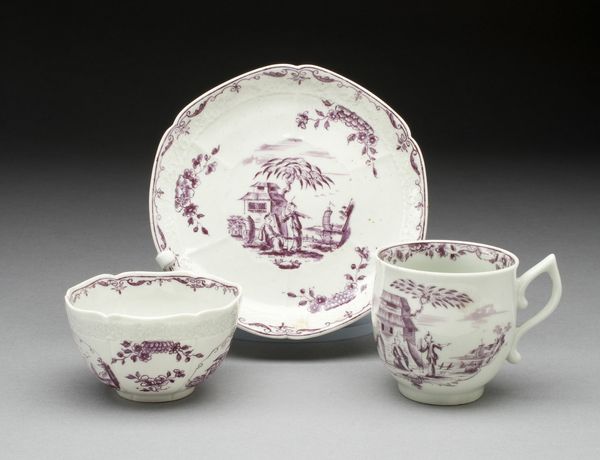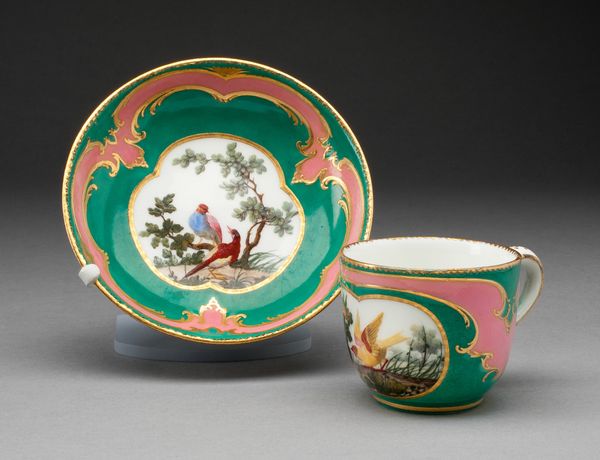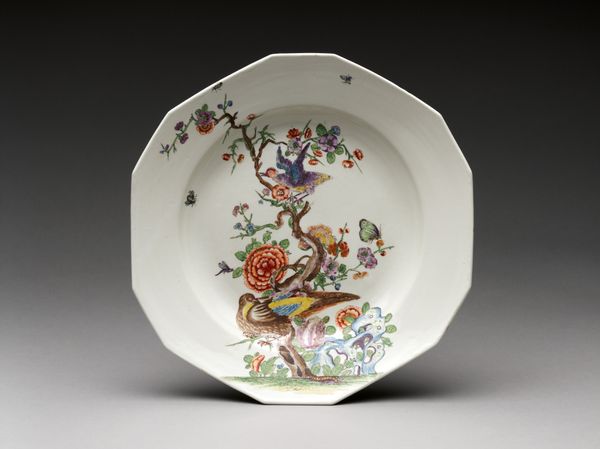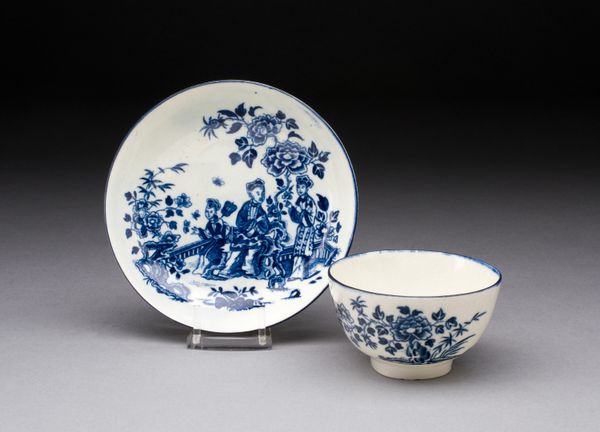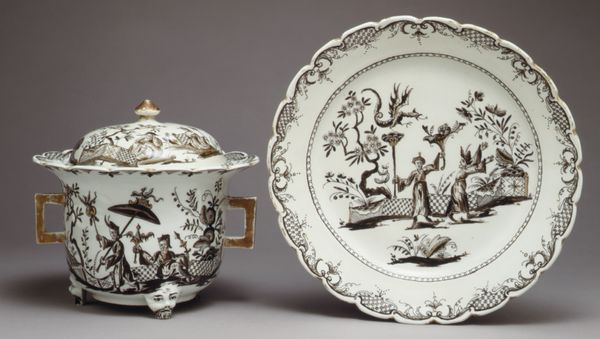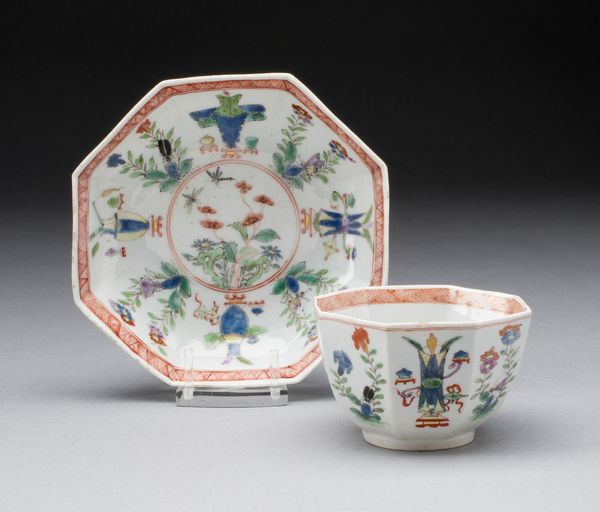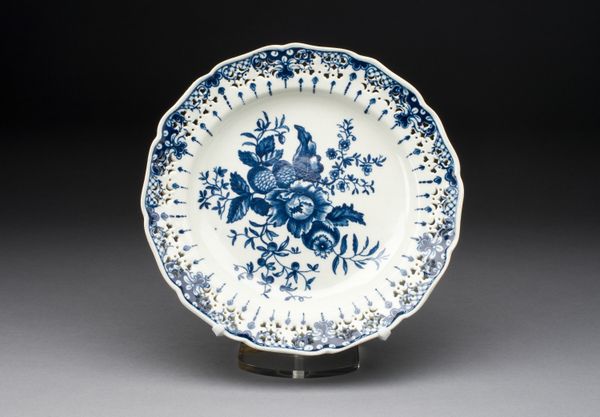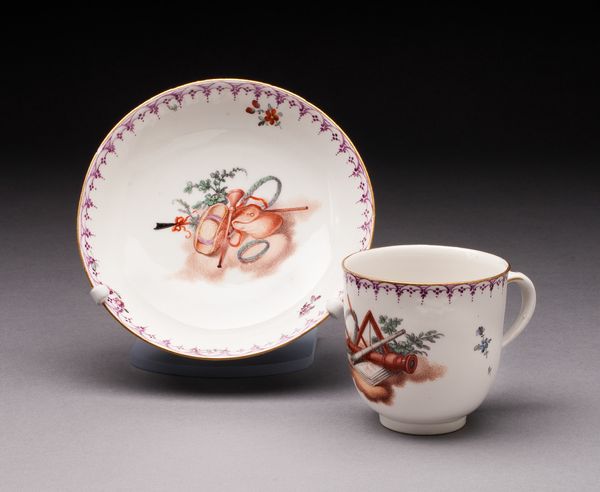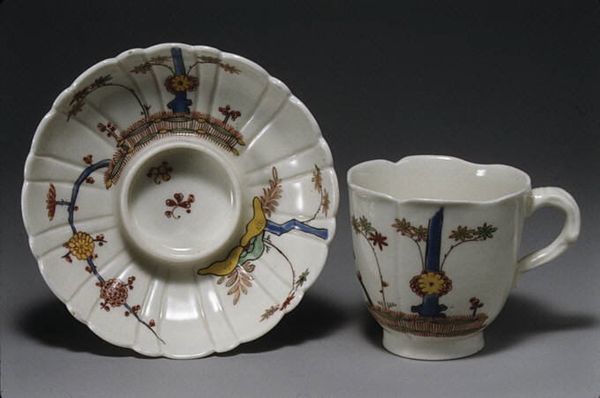
ceramic, porcelain
#
asian-art
#
ceramic
#
porcelain
#
ceramic
#
decorative-art
Dimensions: Cup: H. 4.1 cm (1 5/8 in.); diam. 7.8 cm (3 1/16 in.); Saucer: diam. 13 cm (5 1/8 in.)
Copyright: Public Domain
Editor: This is a “Tea Bowl and Saucer” crafted around 1730 by the Du Paquier Porcelain Manufactory. Both pieces are made from porcelain, and the delicate decoration has an elegant, almost playful feel. I’m struck by the Eastern inspired motifs… what stands out to you? Curator: This piece highlights the 18th-century European fascination with Asia, what we often term "Chinoiserie." It wasn’t just about aesthetics; it was deeply embedded in trade and political dynamics. Editor: How so? Curator: The East India Companies, like the British and Dutch ones, heavily influenced European taste. These companies brought back luxury goods – tea, silk, porcelain – that were status symbols. This tea bowl and saucer reflect that desire to emulate the exotic East but reinterpreted through a European lens. Note how the scenes depicted are fantasies, rather than accurate depictions of Asian life. It catered to European demand for oriental goods but created their own version. Editor: So, it’s less about authentic representation and more about crafting a European ideal of the East? Curator: Exactly. Porcelain production itself became a status symbol. The Meissen factory discovered the formula for hard-paste porcelain in 1708, leading to rivalries among European courts to establish their own porcelain manufactories. The Du Paquier factory in Vienna, who created this, was an early competitor. What does this object, then, tell us about global trade, cultural appropriation, and courtly competition during this time? Editor: It gives me a lot to think about the stories these decorative objects tell about the world that produced them, and that these images are not necessarily about Eastern culture. It sounds like it has a lot to do with the image that Westerners were cultivating about Asia and themselves. Curator: Precisely. It reflects the power dynamics inherent in cultural exchange and consumption during that era.
Comments
No comments
Be the first to comment and join the conversation on the ultimate creative platform.
